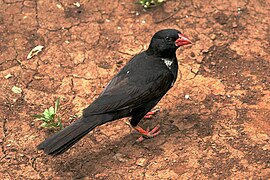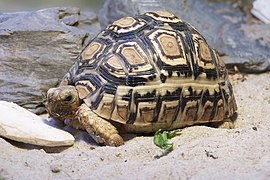In Africa, the little five game animals are defined as the:
- Elephant Shrew: This tiny insect eating mammal gets its name from its elongated red snout to track down their prey and uses its tongue to flick small insects, leaves, seeds, and small fruits into its mouth.
- Red-billed buffalo weaver: is a dark feathered little bird with a bright red beak and they are omnivorous as their diet consists mainly of insects, seeds, and fruit.
- Leopard tortoise: large tortoises that have beautiful leopard-like markings all over their shells. They are herbivorous, with their diet consisting mostly of plants including forbs, thistles, grasses, and succulents, this also includes some types of small fruits.
- Antlion: is a small omnivorous insects that digs conical shaped traps in sandy soil as larvae to help catch its intended prey of other smaller insects and consume The antlion larvae eat ants and other insects, when they mature into adults they consume pollen and nectar instead.
- Rhino beetle: these little herbivorous insects are said to be among the strongest creatures in the world in proportion to their body weight. As larvae, they consume primarily decaying plant matter and as adults, they feed on various types of fruit, nectar, and sap.[1]
The term little five was brought to life after the marketing success of the big five for tourist safaris in Southern Africa. This prompted a call by nature conservationists for visitors to acknowledge the smaller, less noticed, but still enigmatic animals of the savanna (called bushveld in South Africa).
The "little five" species are a contrast in terms of sheer relative size to the animals, which they share a part of their English name with the more well known "big five".
See also
editReferences
edit- ^ "Africa's little five safari animals include the elephant shrew, ant lion, rhinoceros beetle, buffalo weaver and the leopard tortoise". Your African Safari. Retrieved 14 October 2022.
Sources
edit- "The Little Five: Africa's Smaller Safari Animals". Archived from the original on 13 May 2013. Retrieved 23 May 2013.
- "Africa's little five safari animals include the elephant shrew, ant lion, rhinoceros beetle, buffalo weaver and the leopard tortoise". Archived from the original on 13 August 2013.




